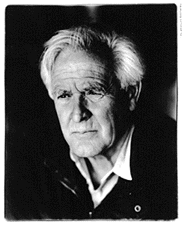
How does a book end up reviewed in both the New York Times Book Review and the newspaper’s Arts section, while the the book’s author is writing essays for the paper (and sometimes even being profiled for it)? New York Times Public Editor Margaret Sullivan explains how Times fiefdoms divide their assignments: “The Times’s three staff book critics—Michiko Kakutani, Janet Maslin and Dwight Garner—make their own decisions about what to review. They do so without regard to, or knowledge of, what the editors of the Sunday Book Review, a separate entity, may have assigned or have planned.”
Boris Kachka sits down for dinner with James Wood and Claire Messud, and the couple shares their views on literature, child-raising, and the nation’s capital: “I had been the one saying, ‘We need to move to the United States,’ ” Messud says, mocking her own complaint in a whining, mousy voice. “But I didn’t mean Washington! And I was miserable there, miserable.”
At the UC Berkeley English Department blog, TV critic and seventh-year graduate student Lili Loofbourow talks about how she started blogging about gender in media, and what academics could learn from internet writing.
Despite being the paper’s media critic, Brian Stelter gets ripped apart in a New York Times review of his first book about the morning-TV talk-show wars.
Here’s a fun detail that’s easy to miss in Dwight Garner’s profile of John le Carré: the novelist “recalls opposing Jeremy Irons for the lead role in the 1990 film of his novel The Russia House — the part went to Sean Connery — on moral grounds, because of an incident in a London park. ‘Irons’s vicious dogs,’ le Carré said, ‘attacked my smaller dogs. He never stooped to apologize.’”
How the invention of the paperback radically democratized book-buying.
